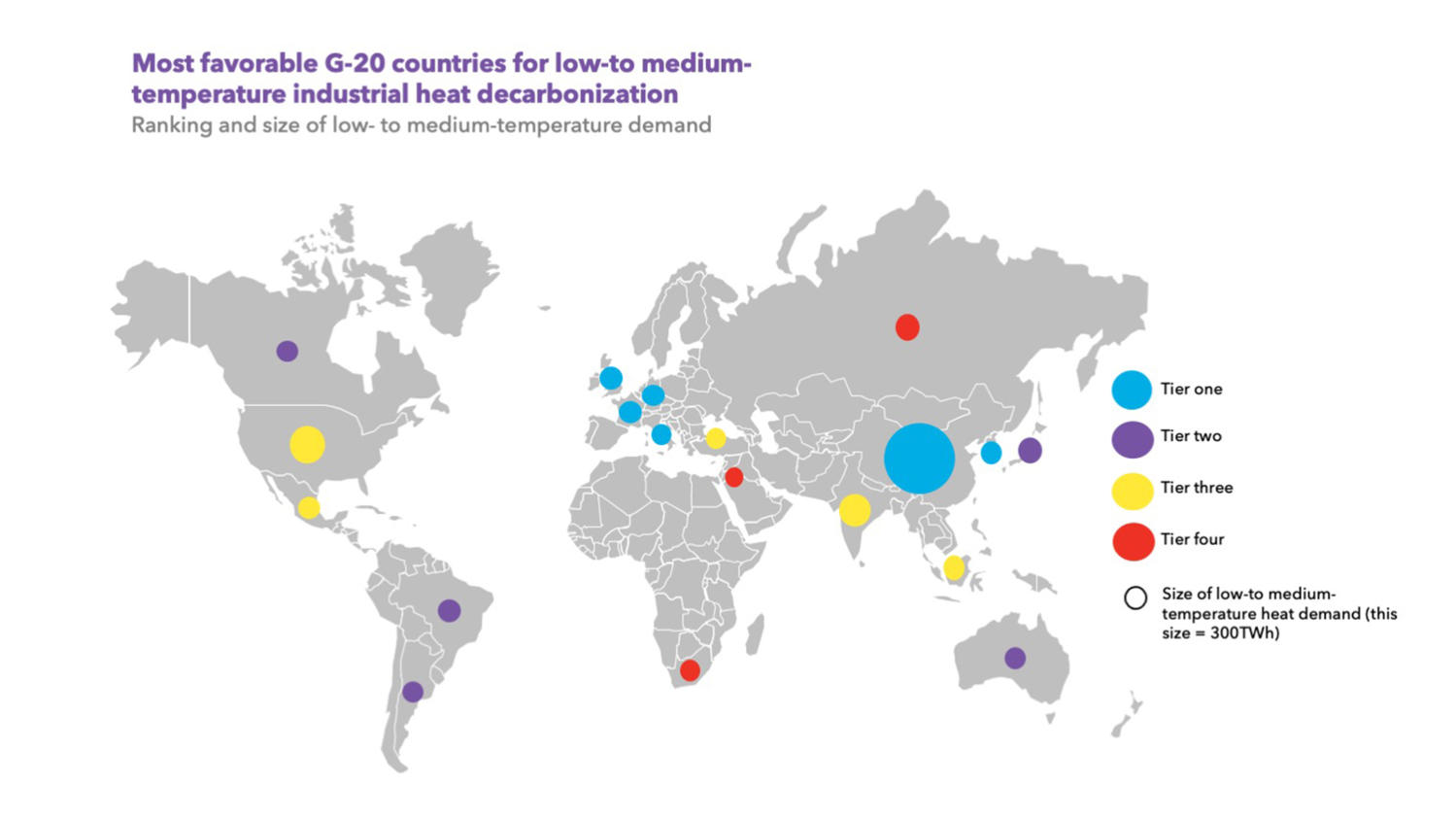The transition to low-carbon energy is already well underway within the electricity sector, yet one key aspect of the transition remains overlooked. There has been little-to-no progress made to decarbonize industrial heat – an essential part of industrial processes. For example, it is the energy input that triggers the chemical reactions to make medicine and household cleaning products. It is needed to transform metal ore into steel and, ultimately, consumer goods like cars. It is used to pasteurize milk, brew beer and dry paper.
Industrial heat use accounted for a third of global final energy demand in 2018, producing carbon dioxide emissions roughly equal in size to the total emissions from transport. Coal, oil, and natural gas have dominated the fuel supply for heating to date.
Sourcing low-carbon heat is the next big hurdle for industrial end-users looking to meet their climate targets. Novartis, a global medicines copmany, is already set to achieve 100% renewable electricity across its operations in Europe, Canada, and the U.S. James Goudreau, head of environmental sustainability external engagement at Novartis said that “decarbonizing process heat is the next big challenge for meeting our 2030 climate goals.”
This challenge might seem daunting, but it is not insurmountable for corporations. Renewable heat solutions exist and are commercially available to be deployed today in many markets, particularly for low-to medium-temperature heat (defined as heat up to 400 degrees Celsius). Electrification using industrial-scale heat pumps and electric boilers is anticipated to be the front-runner, but bioenergy, geothermal and solar thermal will all play a crucial role too.
Major corporations, such as Philips, have already signaled their intentions to completely phase out fossil fuels. “After becoming carbon neutral in our operations in 2020, we raised the bar and committed to Science Based Targets and reduce our full value chain emissions in line with a 1.5 degrees global warming scenario. For our sites, now running on 100% renewable electricity, that means phasing-out fossil fuels as a next step,” said Robert Metzke, Global Head of Sustainability at Philips.
The challenge for renewable heat is largely economic: generating industrial heat with fossil fuels is cost competitive in most markets, while many renewable options have high upfront capital costs. Additionally, there is no single answer that can be rolled out across global portfolios. Identifying the most competitive options requires detailed analysis.
BloombergNEF and the World Business Council for Sustainable Development (WBCSD) collaborated to develop Hot Spots for Renewable Heat: Decarbonizing Low- to Medium-Temperature Industrial Heat across the G-20. It is a guide for industrials outlining which G-20 member countries are likely to offer the best conditions for decarbonizing light industry.
China, France, Germany, Italy, South Korea and the U.K. lead the way. These markets offered the best market conditions, policies, resource availability to support decarbonization. This is promising, as the top performing markets represent almost half of low- to medium-temperature heat use today, driven primarily by China.
Unfortunately, the U.S. and India, which represent the second- and third-largest portion of demand for low- to medium-temperature heat respectively, were deemed less favorable markets for decarbonization. This was driven by both markets having limited-to-no national-scale policy. Meanwhile, decarbonizing heat in countries such as Russia, Saudi Arabia and South Africa prove particularly challenging.
Countries recognized as most favorable for decarbonization were deemed to have favorable economics, such as relatively high fossil fuel prices and a low power-to-gas ratio, suggesting that projects could be realized. They also had more mature markets for renewable heat solutions, indicating a ready presence of sophisticated installers and solutions providers.
Governments seeking to achieve net-zero targets, as well as attract and retain leading industrials, must focus on setting supportive policies.
Putting a price on emitting carbon has been a popular avenue for many countries, although the price and allocation of free allowances has dampened the potential impact.
To effectively decarbonize heat, it will be critical to improve carbon markets and implement other policies such as upfront cost subsidies and renewable heat targets. Any progress made by G-20 countries will mark a huge step toward achieving climate goals and should be top of mind as we approach COP 26 in November.
The complete report is available for download via the following link.










